| Listing 1 - 10 of 29 | << page >> |
Sort by
|
Book
ISBN: 1107146569 1280415398 9786610415397 0511182775 0511129327 0511200552 0511614926 051130093X Year: 2005 Publisher: Cambridge ; New York : Cambridge University Press,
Abstract | Keywords | Export | Availability | Bookmark
 Loading...
Loading...Choose an application
- Reference Manager
- EndNote
- RefWorks (Direct export to RefWorks)
Phylogeny is a potentially powerful tool for conserving biodiversity. This book explores how it can be used to tackle questions of great practical importance and urgency for conservation. Using case studies from many different taxa and regions of the world, the volume evaluates how useful phylogeny is in understanding the processes that have generated today's diversity and the processes that now threaten it. The novelty of many of the applications, the increasing ease with which phylogenies can be generated, the urgency with which conservation decisions have to be made and the need to make decisions that are as good as possible together make this volume a timely and important synthesis which will be of great value to researchers, practitioners and policy-makers alike.
Periodical
Abstract | Keywords | Export | Availability | Bookmark
 Loading...
Loading...Choose an application
- Reference Manager
- EndNote
- RefWorks (Direct export to RefWorks)
Biodiversity conservation --- Biodiversity --- Ecology --- Biodiversity. --- Biodiversity conservation. --- Biodiversité --- Conservation
Book
Year: 2005 Publisher: Washington, DC : U.S. Agency for International Development,
Abstract | Keywords | Export | Availability | Bookmark
 Loading...
Loading...Choose an application
- Reference Manager
- EndNote
- RefWorks (Direct export to RefWorks)
Biodiversity. --- Biodiversity conservation. --- United States.
Book
ISBN: 1107146291 1280436565 9786610436569 0511182295 0511199716 0511300271 0511542089 0511125356 Year: 2005 Publisher: Cambridge ; New York : Cambridge University Press,
Abstract | Keywords | Export | Availability | Bookmark
 Loading...
Loading...Choose an application
- Reference Manager
- EndNote
- RefWorks (Direct export to RefWorks)
Biodiversity is recognised to be of global importance, yet species and habitats continue to be under increasing pressure from human-induced influences. Environmental concerns are high on the political agenda, driving increased legislation to protect the natural environment. The starting point for much of this legislation is the requirement for a comprehensive biodiversity audit. For those needing to undertake such audits, this Handbook, first published in 2005, provides standard procedures which will enable practitioners to better monitor the condition of the biodiversity resource, resulting in improved data upon which to base future policy decisions and actions. Organised in three parts, the Handbook first addresses planning, covering method selection, experimental design, sampling strategy, and data analysis and evaluation. The second part describes survey, evaluation and monitoring methods for a broad range of habitats. Part three considers species and provides information on general methods before addressing specific methods of survey and monitoring for the major taxonomic groups.
Biodiversity --- Biodiversity conservation. --- Research --- Methodology.
Book
Year: 2005 Publisher: [Denver, Colorado] : [U.S. Department of the Interior], Bureau of Land Management, National Science & Technology Center,
Abstract | Keywords | Export | Availability | Bookmark
 Loading...
Loading...Choose an application
- Reference Manager
- EndNote
- RefWorks (Direct export to RefWorks)
Biodiversity conservation --- Gap analysis (Planning) --- Vegetation mapping
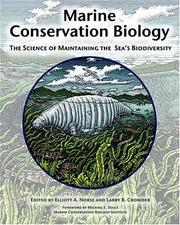
ISBN: 1559636629 1559636610 Year: 2005 Publisher: Washington : Island Press,
Abstract | Keywords | Export | Availability | Bookmark
 Loading...
Loading...Choose an application
- Reference Manager
- EndNote
- RefWorks (Direct export to RefWorks)
Marine biodiversity conservation. --- Biodiversité marine --- Conservation --- Biodiversité marine --- Marine biodiversity conservation --- Conservation of marine biodiversity --- Marine biodiversity --- Marine biological diversity conservation --- Aquatic biodiversity conservation --- Marine resources conservation
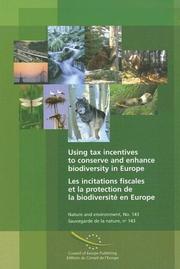
ISBN: 9789287157805 9287157804 Year: 2005 Publisher: Strasbourg: Conseil de l'Europe,
Abstract | Keywords | Export | Availability | Bookmark
 Loading...
Loading...Choose an application
- Reference Manager
- EndNote
- RefWorks (Direct export to RefWorks)
Environmental policy --- Tax incentives --- Biodiversity conservation --- Nature conservation
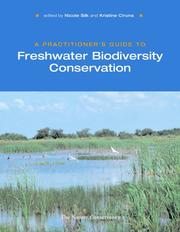
ISBN: 1597266191 1429497890 9781429497893 9781597260442 1597260444 9781597260435 1597260436 1597260444 1597260436 Year: 2005 Publisher: Washington, DC : Island Press,
Abstract | Keywords | Export | Availability | Bookmark
 Loading...
Loading...Choose an application
- Reference Manager
- EndNote
- RefWorks (Direct export to RefWorks)
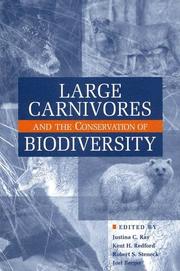
ISBN: 1597266094 1429495197 9781559630795 1559630795 9781559630801 1559630809 9781429495196 9781597266093 1559630795 1559630809 Year: 2005 Publisher: Washington : Island Press,
Abstract | Keywords | Export | Availability | Bookmark
 Loading...
Loading...Choose an application
- Reference Manager
- EndNote
- RefWorks (Direct export to RefWorks)
Biodiversity conservation. --- Carnivora -- Conservation. --- Carnivora -- Ecology. --- Predation (Biology). --- Carnivora --- Predation (Biology) --- Conservation. --- Ecology.
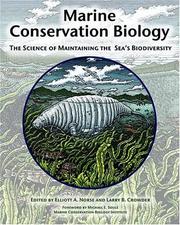
ISBN: 1597267716 1435648560 9781435648562 9781559636612 1559636610 9781559636629 1559636629 9781597267717 9781597267717 Year: 2005 Publisher: Washington : Island Press,
Abstract | Keywords | Export | Availability | Bookmark
 Loading...
Loading...Choose an application
- Reference Manager
- EndNote
- RefWorks (Direct export to RefWorks)
Marine biodiversity conservation. --- Biodiversity conservation. --- Biodiversity --- Biological diversity conservation --- Conservation of biodiversity --- Diversity conservation, Biological --- Gender mainstreaming in biodiversity conservation --- Maintenance of biological diversity --- Preservation of biological diversity --- Conservation of natural resources --- Ecosystem management --- Conservation of marine biodiversity --- Marine biodiversity --- Marine biological diversity conservation --- Aquatic biodiversity conservation --- Marine resources conservation --- Conservation
| Listing 1 - 10 of 29 | << page >> |
Sort by
|

 Search
Search Feedback
Feedback About UniCat
About UniCat  Help
Help News
News